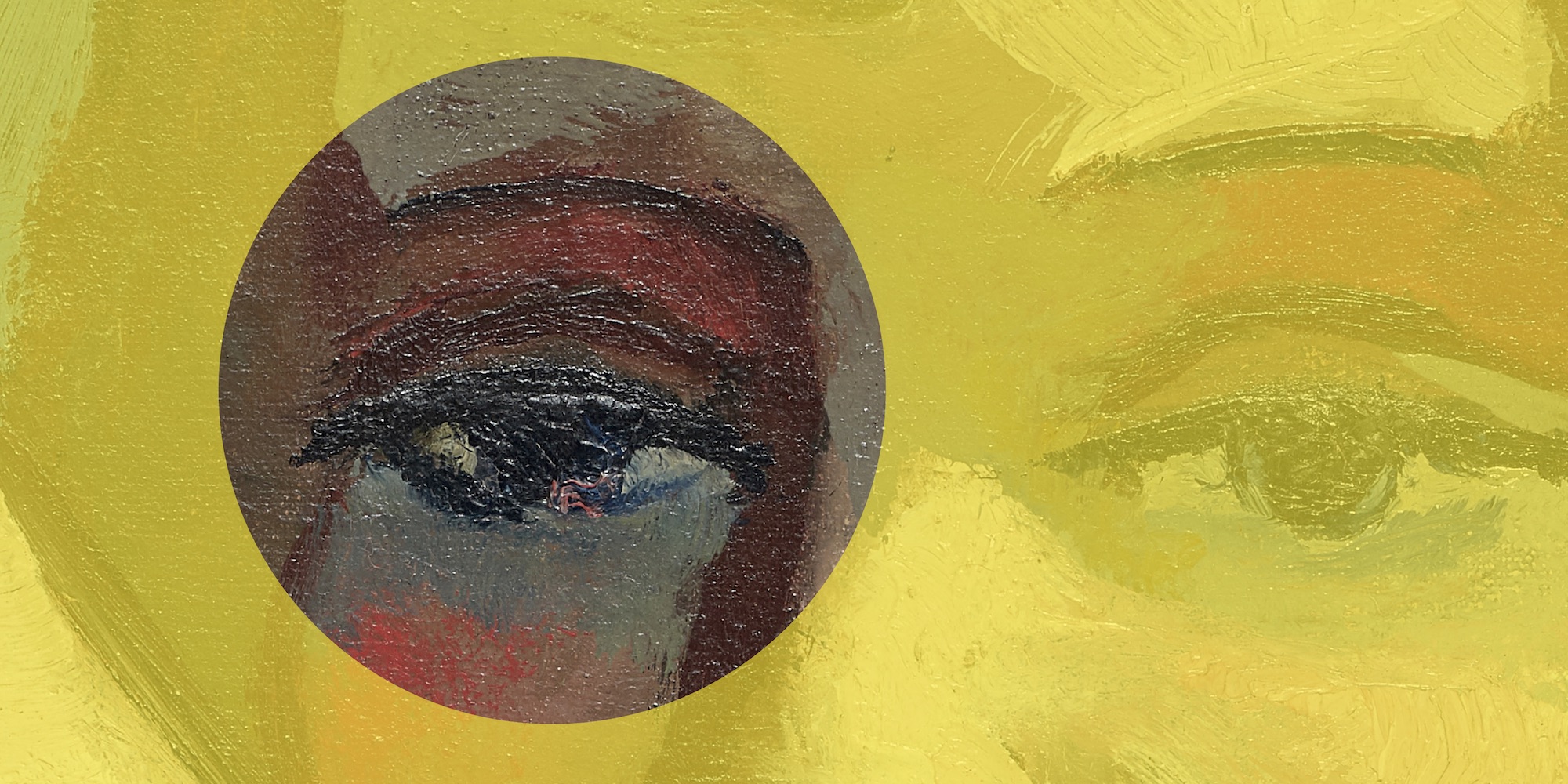

THROUGH OTHER EYES
24 March 2024 – 30 June 2024
For her last exhibition at the Franz Marc Museum, the director Cathrin Klingsöhr-Leroy, who retires at the beginning of May, has invited three colleagues and friends to work together on a joint project.
The artist Karin Kneffel, the Romanist Barbara Vinken and the art historians Cathrin Klingsöhr-Leroy and Julia Voss take a new look at the collection in the Franz Marc Museum and enable unfamiliar perspectives to be gained of well-known works by the Blauer Reiter (Blue Rider) and Brücke (Bridge) artists.
Karin Kneffel Face of a Women, Head of a Child
The artist Karin Kneffel presents pictures from her series Face of a Woman, Head of a Child created in 2005, and combines these with mother-and-child images from the Expressionist period, including paintings and sculptures by Wilhelm Lehmbruck, Paula Moderson-Becker, Max Beckmann, Franz Marc and Otto Müller. How has the image of the Madonna and the Christ Child, the depiction of the mother-and-child, changed over the centuries? How was this interpreted in the first half of the 20th century and what notions did these works convey?
Barbara Vinken Ver-Kleidet (Dressed Up)
The literary scholar and gender and fashion researcher Barbara Vinken comments on works by Else Lasker-Schüler, Otto Dix, Alexej von Jawlensky and other artists, seen in the light of her current publications on the subversive character of fashion since the French Revolution. Else Lasker-Schüler’s androgynous self-portrayal, for example, stage-setting herself in oriental garments as Prince Jussuf, is not only a strategy for a widely acclaimed appearance in the male-dominated art world but also an attitude that is reflected in the contemporaneous creations of the couturier Paul Poiret. His afternoon wear in the 1910s included creations in the oriental style and pantaloons for women.
Julia Voss Seelenwanderung (Transmigration of the soul)
The art historian Julia Voss, an expert on the work of the Swedish painter Hilma af Klint, juxtaposes watercolours by the artist with paintings by Wassily Kandinsky. Around 1910, both were pioneers at the same time on the path to abstraction. It is even possible they met in 1916 in Stockholm when Kandinsky exhibited there. Both shared a conviction in the power of the spiritual and the movement of the soul as the source of art production and reception. In one of his famous texts Kandinsky wrote: “In general […] colour is a means of exerting a direct influence upon the soul. Colour is the keyboard. The eye is the hammer. The soul is the piano with its many strings. The artist is the hand that purposely sets the human soul vibrating by means of this or that key.”
Cathrin Klingsöhr-Leroy Wachstum der Nachtpflanzen (Growth of night plants)
Do plants have a soul? Only recently is such a question no longer considered absurd and has become part of our mindscape. As part of the exhibition, the director of the Franz Marc Museum has created a room devoted to the spirituality of plants, for which she has selected works by artists who attribute a special energy and spirituality to plants. At the centre is a work by Wolfgang Laib, a cylindrically shaped small mound of hazel pollen in dialogue with a painting by Paul Klee, Wachstum der Nachtpflanzen (Growth of night plants). These works, like Leiko Ikemura’s calligraphic tree pictures, drawings by Joseph Beuys, Peter Handke’s notes on nature and Anna Moll’s three-dimensional natural studies show a perceptive eye for plants, fully aware of their unique aura.
A catalogue is to be published to accompany the exhibition.